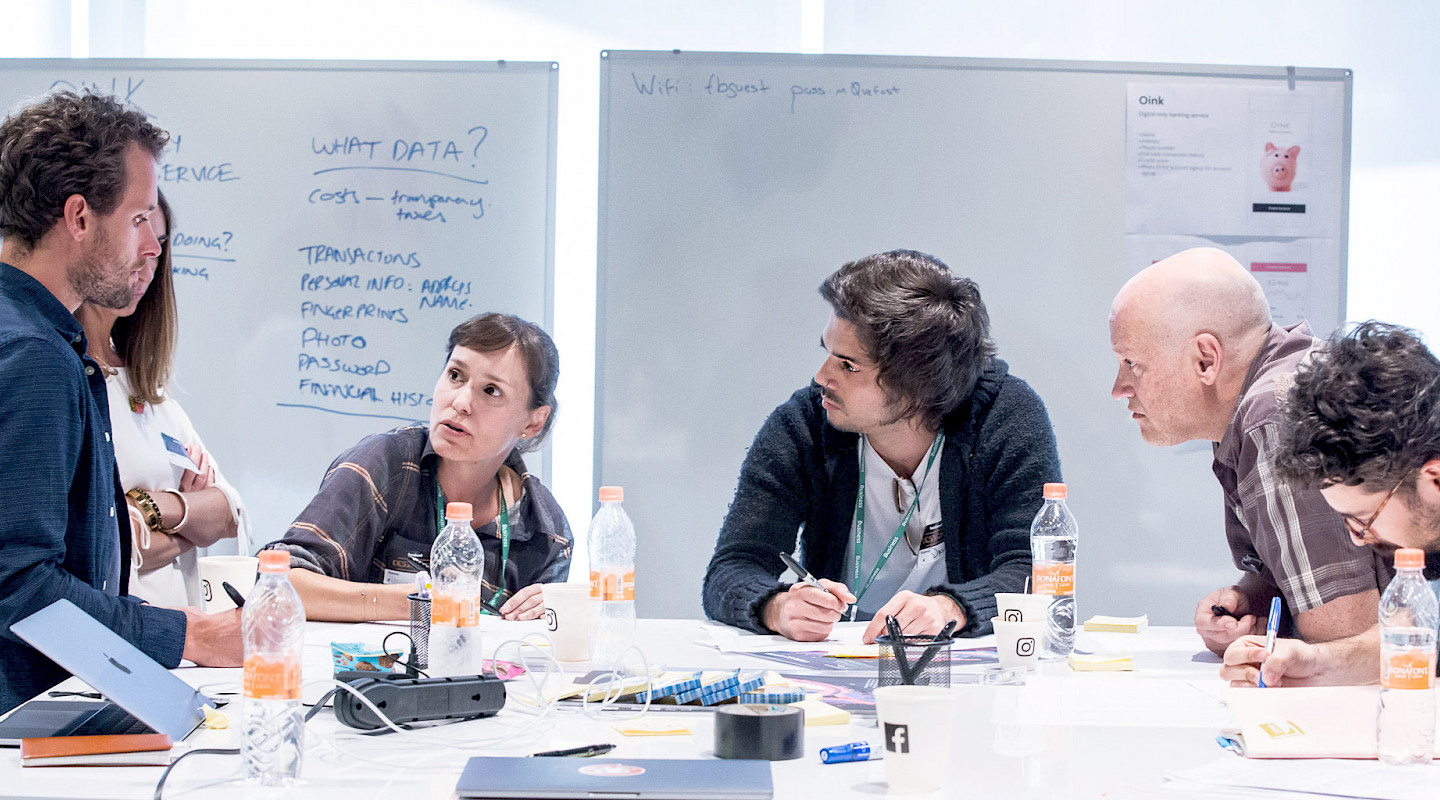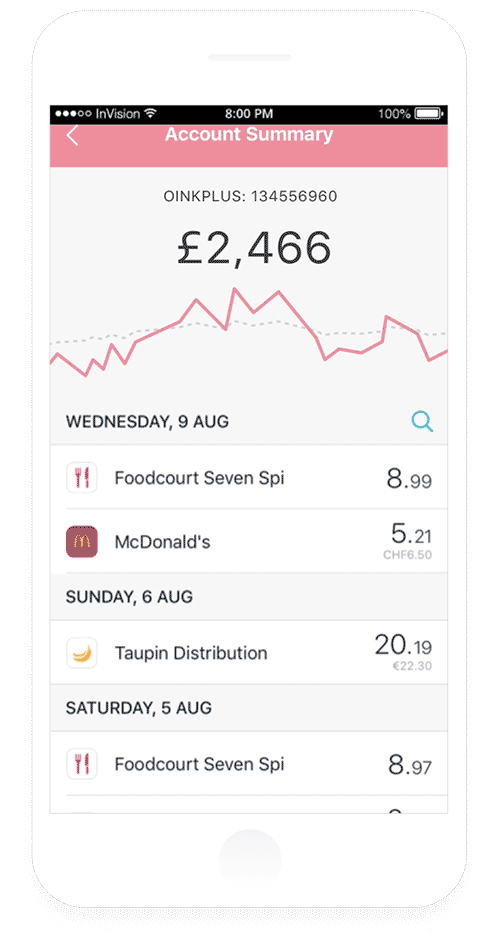How might we...
...take a human/conversational approach to asking for data?
Designing apps that earn people's trust over time, rather than presuming it from the start, requires us to think more deeply about the approach to data collection.

Oink is a fictional challenger bank aimed at a younger market who don't rely on branch-based services. Oink aims to make people’s spending habits more visible, and to encourage short and long-term saving. To do this effectively, Oink relies on data relating to people's daily purchases, cash movements, and displays suggestions to guide them towards meeting financial goals.
In order to provide the service, Oink is powered by some of the following data:

The handling of personal data is particularly challenging for Financial Tech (FinTech) apps and services because, on the one hand, there's a high level of trust required when allowing a company to look after your money, while on the other hand you may be hesitant to give up too much personal data without feeling reassured that they're worthy of your trust.
The cross-functional Design Jam team challenged themselves to consider how Oink could build trust by being transparent about what, how, why, when and where personal data was collected and analysed. Would people feel more open towards Oink if they could trial the value exchange of their data in return for add-on services first, without having to fully commit from the outset?
How might we...
...take a human/conversational approach to asking for data?

Facebook content strategist Sam Royle prototyping with Oink's team
After 100 days of using the app and completing more than 100 transactions, Oink reaches out in a contextual micro-interaction with a friendly reminder, 'We've known each other for a while now. We think we can help you more.' People can choose: 'Tell me more,' 'No, thanks,' or 'I need more time.' This human approach does not presume that trust has been built, and instead gives a person the choice to engage rather than Oink presuming the use of the person's data to drive other new features or services without their knowledge.
If a person chooses to find out more, they are brought to a screen that explains, 'You've reached 100 transactions with us. We'd love to improve our service by using some information that we've learned about you,' alongside a series of on/off choices. By making the benefits clear alongside the controls, consent moves from an annoying requirement to a purposeful action to improve the value exchange between the person and service:
People are more likely to try new things with their data and allow new features if they are confident they can change their mind or simply retrieve options anytime. Within Oink, a privacy overview panel is accessible anytime from a settings icon located in the top bar with the helper text that notes, 'Don't worry, you can update your choices at any point.' A person can turn off/on these choices and other data at a later date.

Building a humanized relationship sounds promising in a world where the amount of gathered personal data increases everyday. Sam Royle, content strategist at Facebook and Oink's team member shared that 'the only way to build open and transparent products is to take a more human approach to how data is being used. Tone of voice is a key consideration when developing a narrative with users, and something that should be carefully thought through when applied in other contexts. Getting the tone of voice right can be the difference between gaining or losing trust.'
As it happens, the team behind these designs intended to take its interactive potential one step further through a chatbot feature. While this idea remained at sketch stage in Sao Paulo – and because great minds think alike – this solution was explored by the Oink team in Dublin!
How might we build on Oink's ideas to...
